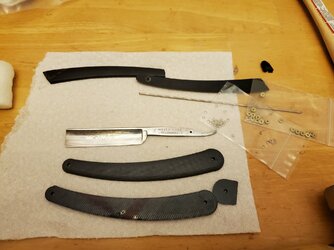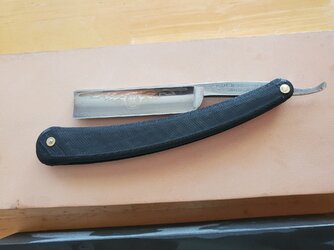I'm no expert, by any means, but here's my process:Yeah, I haven't used it before and my test attempt was pretty patchy, although it did make the wood look awesome.
Tests with oil and wax made too much of the wood dark, hiding the stripes.
I also nearly glued the tube to myself!
I will get better quality CA for the next test with a safer tube.
I'm also thinking of adding a thin fabric lining but can't decide which colour
Sand scales to 600.
Cut paper towels to 1 x 2 strips, fold a couple times when applying. Add glue to towel.
2 coats on the inside and that's that.
Around 6 coats on the outside, then sand with 400 until nearly flat.
4 or 5 more coats, next day sand with 600 until flat (uniformly dull, no low spots).
800 through 2000 (lightly), than Novus 2 on the buffer.
I will hold it first coat by the tip of the wedge end and place the pivot end on a small metal rod. Alternate for the next coat. As it obviously cheats the ends this way, I do a few coats on them last thing. Be really careful sanding the ends and edges! Be really careful sanding the ends and edges!
I wet sand after the CA is applied, but that's just me.
The instant cure acetone spray is a marvelous thing!




